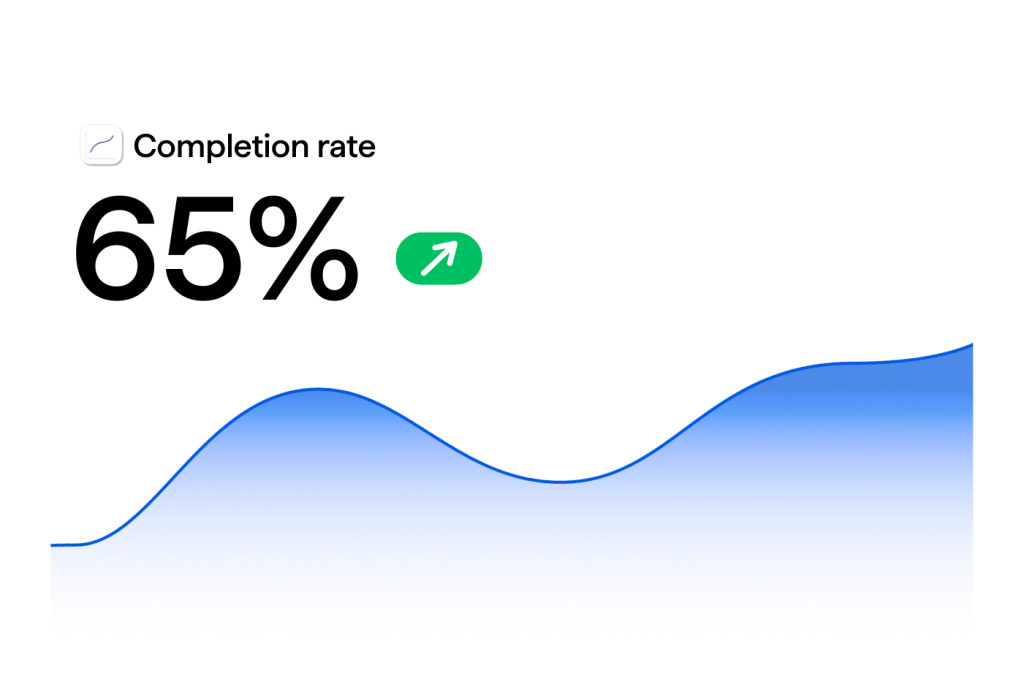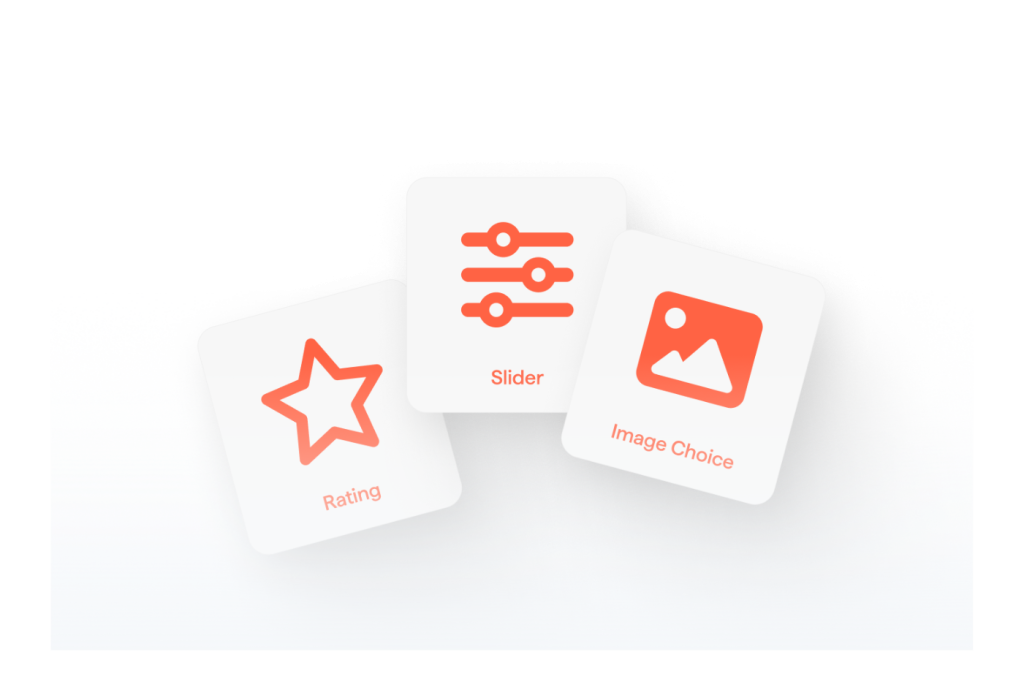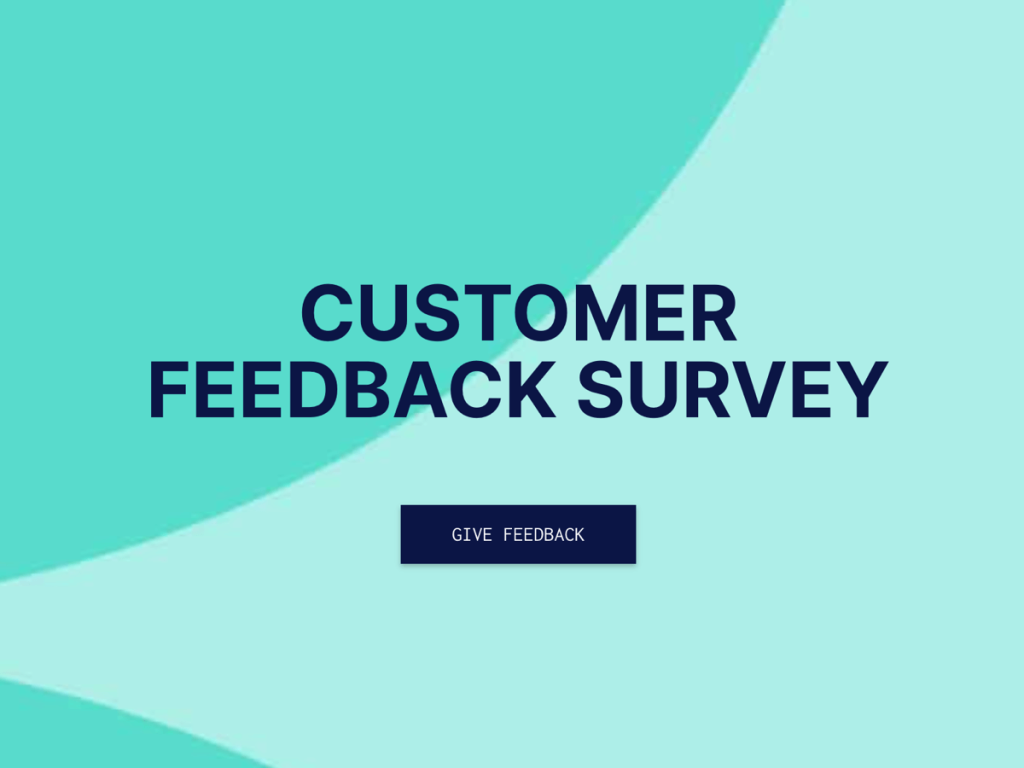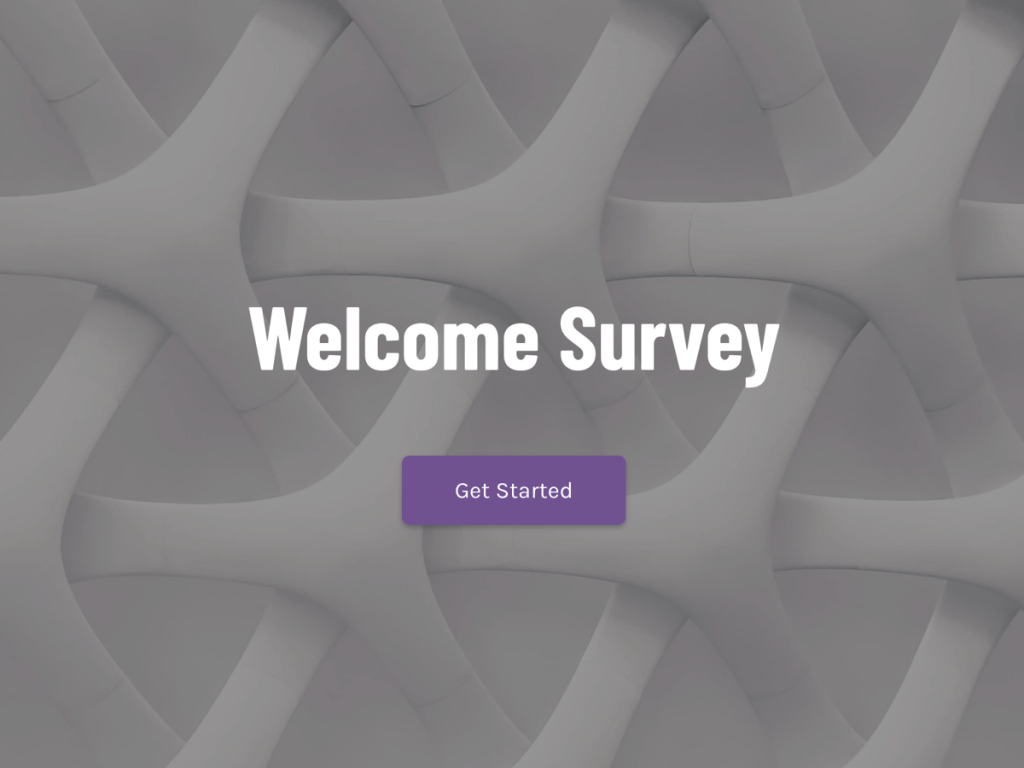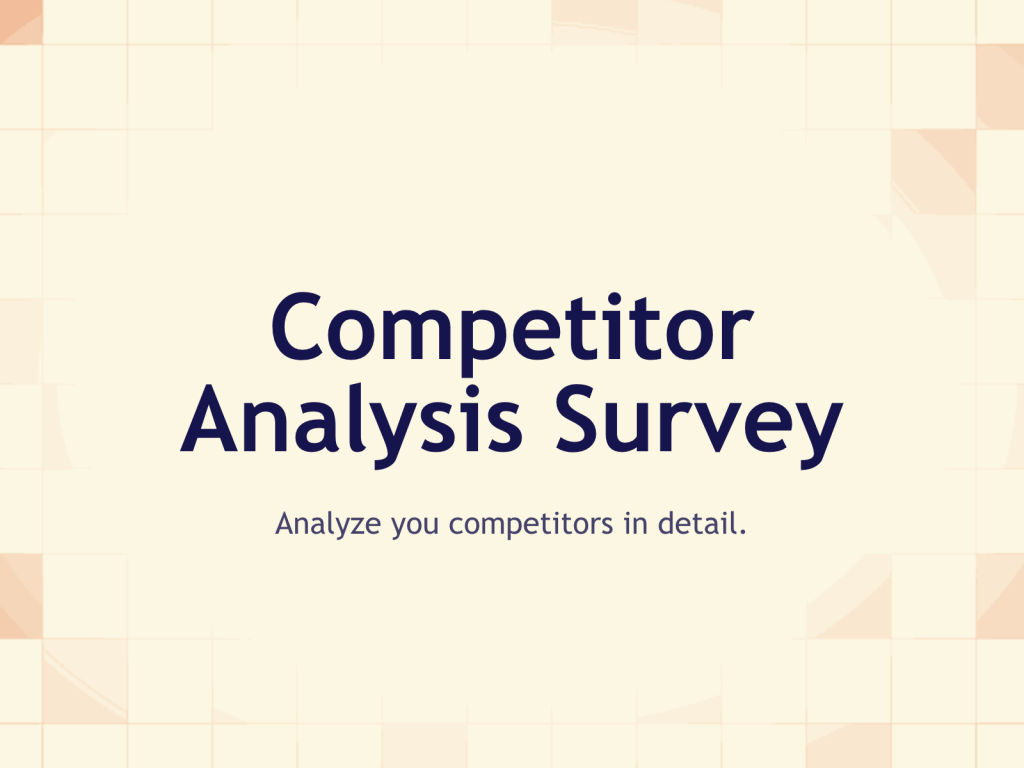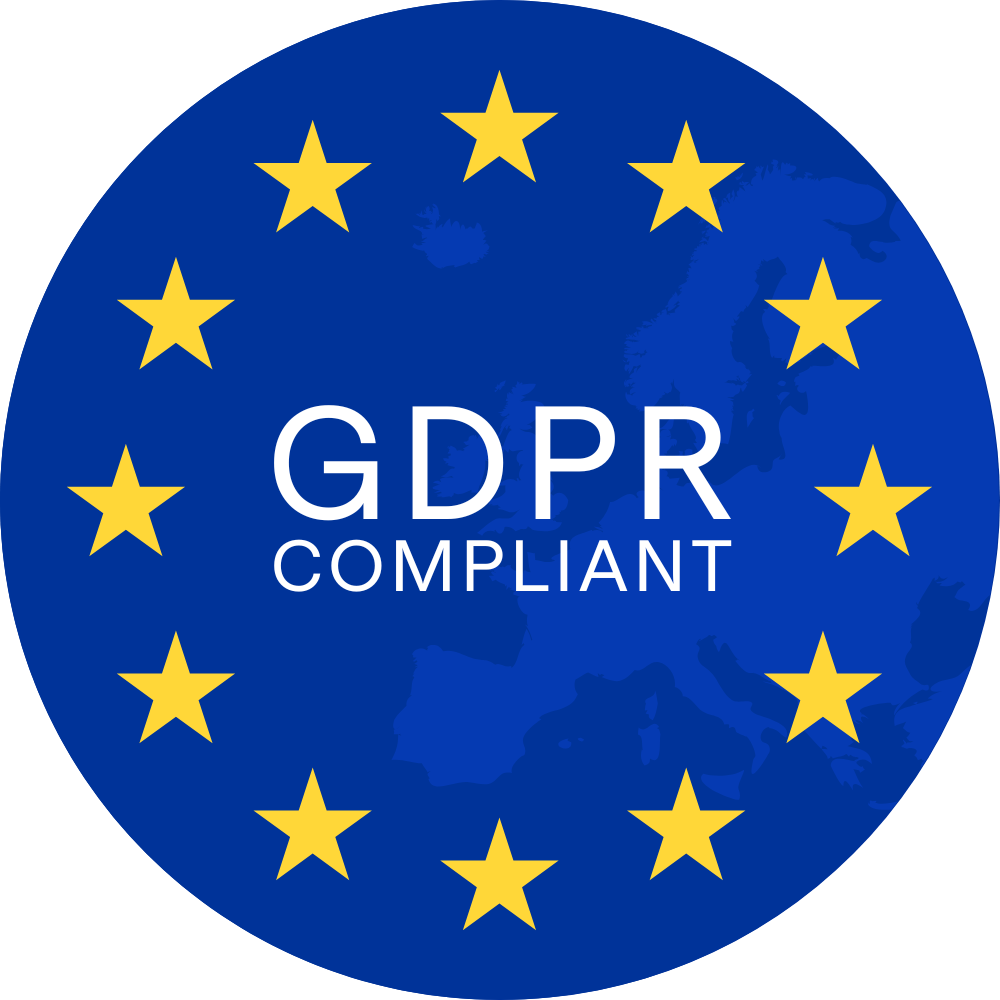Survey Builder
Create interactive surveys in minutes. Customize and personalize every detail to boost completion rates and capture meaningful insights that lead to smarter business decisions.
- Collect feedback from customers & employees
- Generate authentic reviews for your products
- Conduct regular market research studies
Used daily by more than 4,500 businesses worldwide.









Here's how the survey builder works
-

01 Create
Create a survey online using our no-code builder or simply ask our AI Agent to do it for you. Enhance engagement with visuals, customize the design to match your brand, and personalize the experience using dynamic survey, form, quiz, and calculator elements.
-

02 Publish
Connect your survey with 60+ native integrations, plus countless more through Zapier. Share them anywhere by embedding on your site, launching as a popup, or publishing as a landing page, all fully optimized for mobile
-

03 Analyze
Monitor survey performance and user behavior with built-in analytics. Generate AI-powered reports to get insights and run A/B tests to boost completion rates. All GDPR compliant.
What customers say about involve.me survey maker
Create interactive surveys for all your data collection needs
From gathering feedback to conducting research, our survey maker offers all the features and building elements you need to collect data effectively.
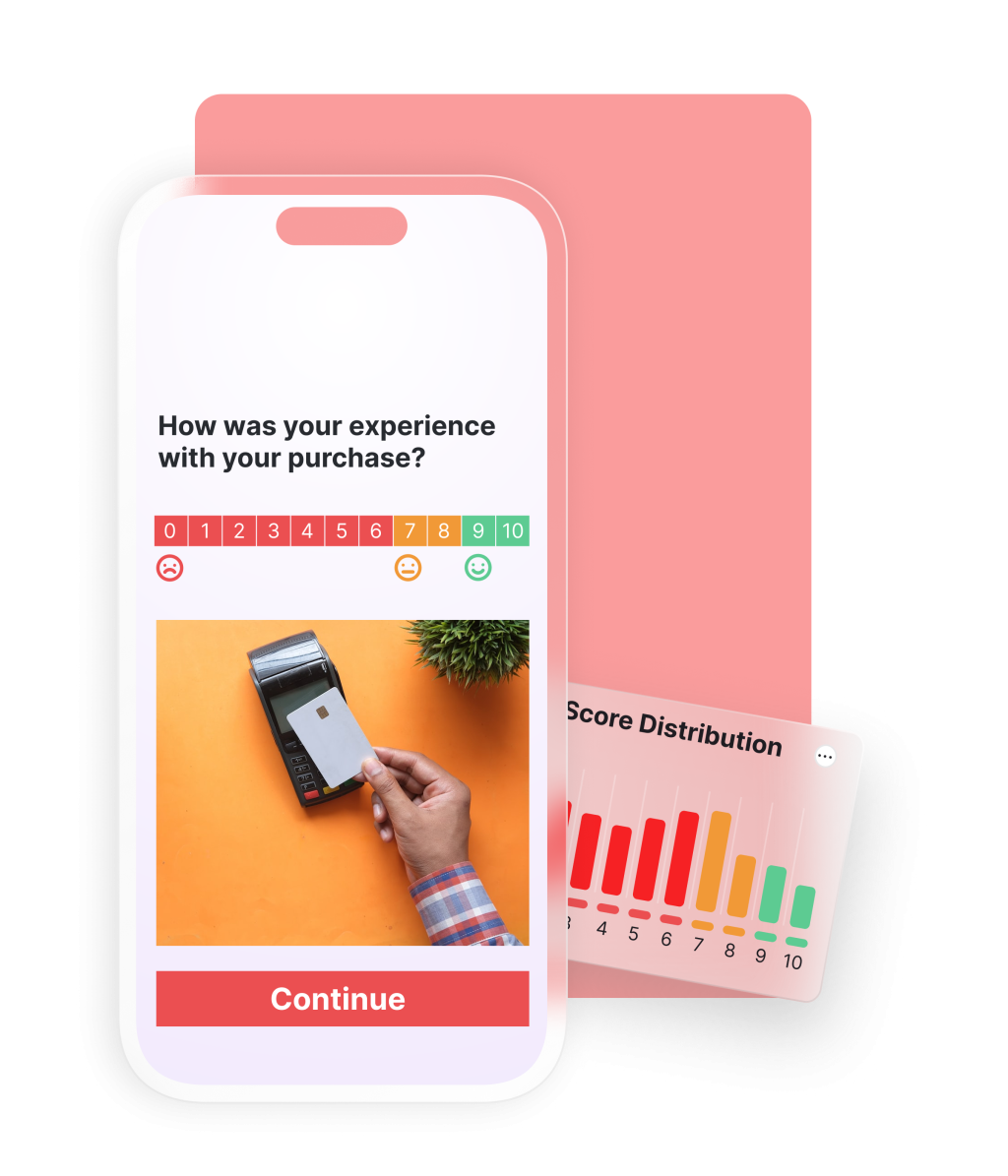



-
Collect meaningful feedback from your clients to understand their needs, spot pain points, and discover opportunities to improve your products or services.
-
Create engaging market surveys to understand your prospects’ preferences while gaining insights into competitors and industry trends.
-
Gather insights and data from visitors in return for rewards, freebies, or exclusive discounts.
-
Simplify onboarding for new users or clients with automated onboarding surveys that guide them seamlessly through essential setup steps.
Native Integrations
Connect & send survey data to your existing apps
All the tools you need to conduct surveys that users want to complete
Contact Profiles
Use contact profiles to view all collected data for a specific participant.
Participant Emails
Send email confirmations to users who interacted with your content instantly and use variables to customize.
Individual Scoring
Assign positive or negative values to each answer and use them in formulas.
Logic Jumps
Guide users to different pages & questions depending on what they answer.
Hidden Fields
Save data from the URL, pipe values to the text and prefill or hide personal data fields.
Outcome Logic
Set different end pages and define your custom logic for displaying them.
Answer Piping
Personalize follow-up questions using previous participant answers & data.
Contact Data Validation
Only accept submissions with valid email addresses and phone numbers.
Free survey templates
Get started with an interactive survey template
No need to start from scratch, start right away with free survey templates. Customize to match your branding, then embed on your website or share as a standalone page. As simple as that.
Automate survey creation & reporting with AI
Let AI manage the entire process, from survey creation to analysis. Generate a branded survey in seconds, edit by chatting with the AI Agent and get insights to improve the survey.
Ask our AI Agent to create a survey based on a simple prompt or generate a branded survey using the AI survey generator.
Customize and tweak every part of your survey by chatting with the AI Agent. Want more control? Use the drag-and-drop editor in parallel.
Use AI Insights to save time analyzing data. Generate reports with summaries, key findings, and recommendations to improve your surveys.
Why you will love our AI-powered survey builder
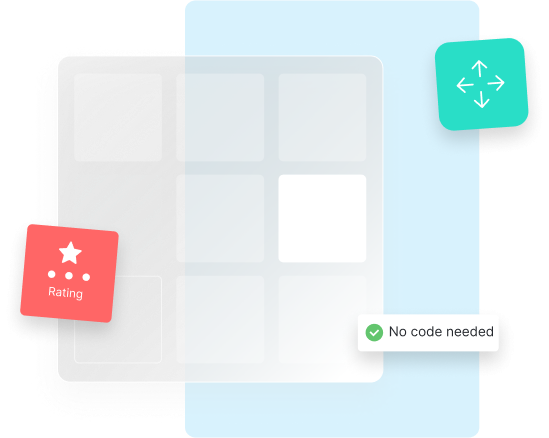
Create interactive surveys without a developer
Create engaging and dynamic surveys by chatting with our AI agent and use the drag-and-drop editor alongside it for manual tweaks. Leverage smart features like logic jumps, answer piping, and hidden fields to personalize the experience and increase completion rates.
Create surveys that match your brand’s look and feel
Make your online surveys more engaging with text, images, videos, and GIFs. Customize every detail, from colors and shapes to line thickness, to match your brand perfectly. Not sure how to do it? Ask our AI Agent to do it for you.


Share or embed your survey anywhere
Publishing your surveys is easy. Share them by email, on social media, or as standalone landing pages. You can also embed them on your website or display them as popups. All surveys are fully responsive and work seamlessly across devices and platforms like WordPress and Webflow.
Simplify qualitative data analysis with AI Insights
Open-ended questions add depth to surveys but can be time-consuming to analyze. With our AI insights, you can process responses in minutes, generate detailed reports with recommendations and summaries, and track key metrics in the analytics dashboard.

What is a survey?
A survey is more than a list of questions. It is a systematic method for gathering data from a specific group of individuals. Asking a series of questions lets researchers gain insights into various subjects, from consumer preferences to public opinion on social issues. The strength of a survey is its structured approach to data collection, which gives you a snapshot of a larger population by studying a smaller, representative sample.
When we talk about surveys, we are referring to a method that allows for the collection of both quantitative and qualitative data. This data can then be analyzed to inform decisions, identify trends, and understand behaviors. Whether conducted online, face-to-face, or through self-administered questionnaires, surveys provide a versatile tool for researchers across disciplines.
What are the main types of surveys?
Surveys come in different forms, and each one has its own strengths and limitations. Knowing the main types of surveys helps you choose the method that fits your research needs.
Each of these survey types plays a useful role in research, and the right choice depends on the goals and constraints of your project. When you understand their specific advantages and limitations, you can pick the method that fits your research objectives most effectively.
Online Surveys
Online surveys give you a lot of flexibility and allow for quick data collection and analysis. You can distribute them widely and fast, which makes them useful for reaching diverse groups. Their success, though, depends on whether respondents have reliable internet access, which can limit who you reach. Even though they are faster and cheaper, in some situations, online surveys may miss the personal connection that face-to-face interactions offer.
Face-to-Face Surveys
When properly conducted, this type of survey can offer the following advantages and considerations:
Provide the opportunity to read non-verbal cues.
Allow for immediate feedback and clarifications.
Improve the quality and depth of the data collected.
Come at a higher cost due to travel, staffing, and longer analysis times.
Phone Surveys
Phone surveys are useful when you want real-time interaction without the cost and logistics of in-person interviews. They allow interviewers to clarify questions, probe for more detailed answers, and reach respondents who may not be comfortable with online forms. However, they require trained staff and can suffer from lower response rates if people avoid unknown numbers or have limited time to talk.
Email Surveys
Email surveys are a low-cost way to reach a large number of people quickly, especially if you already have a contact list. Respondents can complete them at their own pace, which can improve the quality of responses for more thoughtful questions. At the same time, email surveys depend heavily on open rates and inbox visibility, so messages can be ignored, sent to spam, or overlooked among other emails.
Focus Groups
Focus groups bring a small group of participants together to discuss a topic in depth, often guided by a moderator. This format is particularly useful for exploring attitudes, motivations, and perceptions that are hard to capture with structured questions alone. They can generate rich qualitative insights, but they take more time and resources to organize and may be influenced by group dynamics or dominant voices in the discussion.
What is the purpose of surveys?
Surveys are valuable tools for quickly gathering information about the characteristics or opinions of a larger population by using responses from a smaller survey sample, including survey respondents. This makes them especially useful for businesses and organizations that want to make strategic decisions based on real-world data.
In a data-driven environment, surveys are part of a broader ecosystem, working alongside analytics from different sources to give a more complete view of customer behavior. This integration supports more nuanced insights and stronger decision-making. For example, when you combine survey data with sales figures or web analytics, you can uncover trends that might otherwise stay hidden.
Using both quantitative and qualitative questions in surveys can fill gaps in each type of data and provide a more complete picture of the research subject. Quantitative questions can measure trends and opinions in a statistical way, while qualitative questions can explore the reasons behind those trends, offering a deeper understanding of user behaviors and motivations.
How to design a good survey questionnaire?
Creating a good survey questionnaire is both an art and a science. The goal is to design questions that are clear, specific, and able to capture the true opinions of respondents through effective questionnaire design.
Clarity and Specificity
Good survey questions need to be clear and specific so you avoid confusion. Ambiguous questions can lead to different interpretations, which results in unreliable data. It is important to use straightforward language that matches the literacy level of your intended respondents.
Balanced Response Options
Providing a balanced range of response options helps you capture respondents’ true opinions in their answers. For example, using a Likert scale with options ranging from “strongly agree” to “strongly disagree” allows for more nuanced feedback. Avoiding absolutes in questions, such as “always” or “never,” gives respondents the flexibility to answer more accurately, which can improve the response rate. Additionally, including a variety of answer options can improve the quality of the feedback you collect.
Variety and Engagement
Using a variety of question types, such as multiple-choice, open-ended, and scale questions, can help maintain respondent engagement throughout the survey. This variety keeps the survey more interesting and also ensures that different aspects of the research question are covered.
Pre-testing and Instructions
Pre-testing your survey questionnaire is essential to identify potential misunderstandings before full deployment. Providing clear instructions at the beginning of the survey helps respondents understand how to answer the questions correctly. Considering cultural differences also plays an important role in designing questions that are easy for a diverse audience to understand. Key considerations include:
Pre-testing the survey questionnaire to identify potential misunderstandings.
Providing clear instructions at the beginning of the survey.
Considering cultural differences to design questions that are understandable for a diverse audience.
Quantitative vs. Qualitative Survey Questions
Understanding the differences between quantitative and qualitative survey questions is key to designing effective surveys that meet your research objectives.
Quantitative Questions
Quantitative questions are designed to capture numerical data, often through closed-ended question formats such as multiple-choice or scale questions. These demographic questions are useful for gauging public sentiment on specific issues and for providing a general overview of market needs and preferences. They typically rely on larger sample sizes to ensure representativeness and statistical validity, working with various numerical values. Additionally, quantitative research often uses these methods to analyze trends effectively.
Qualitative Questions
In contrast, qualitative questions are typically open-ended questions that allow respondents to elaborate on their thoughts and experiences. These questions yield unstructured data and capture deeper meanings behind behaviors and experiences. Qualitative research can be more subjective and context-specific, which makes it suitable for exploring complex behaviors and motivations.
Choosing the Right Type
The choice between quantitative and qualitative methods is guided by the specific goals of your research project. If the focus is on measuring trends and obtaining statistical data, quantitative questions are more appropriate. However, if the aim is to explore complex behaviors and motivations, qualitative questions are the better option. Understanding these differences helps ensure that your survey design aligns with your research objectives and provides the insights you need through mixed methods research, qualitative or quantitative research, and quantitative research methods.
What are the best practices for survey design?
Avoiding Bias and Clear Language
Using scientifically tested methods helps reduce bias and increases the reliability of the data you collect.
Avoiding leading questions and biased wording is crucial, because they can strongly skew results and lead to flawed interpretations.
Clear, simple language without jargon makes it easier for respondents to understand the questions and answer accurately.
Personalization and Ethical Considerations
Personalization in online surveys, such as tailored questions, answer piping, and conditional logic, can considerably increase respondent engagement. It also helps fill the gap in personal connection compared to face-to-face surveys.
Ethical considerations around specific issues and sensitive topics are also becoming more important. Being transparent about how you use the data builds trust with respondents and helps you stay compliant with data protection regulations.
Pre-testing and Instructions
As mentioned earlier, pre-testing your survey is a best practice that helps you spot potential issues before full deployment. Providing clear instructions at the start of the survey also helps respondents understand how to answer the questions correctly.
Participant Recruitment and Pre-contacting
Surveys can use a range of techniques for recruiting participants and gathering data. Pre-contacting potential respondents before sending an online survey can significantly increase response rates. This early contact, such as an email or phone call, helps respondents know the survey is coming and makes them more likely to take part.
Mobile Optimization and Brevity
With a large share of survey responses now coming from smartphones, mobile optimization is critical.
Designing surveys that are responsive and easy to complete on mobile devices leads to higher completion rates.
Shorter surveys that focus on brevity and relevance are becoming more common to reduce survey fatigue among respondents.
Gamification and Reminders
Adding gamification elements to surveys can increase participation and improve response quality by making the experience more engaging. Key points include:
Phone reminders about surveys tend to produce the highest response rates compared to email or mail reminders.
Incentives do not always lead to higher response rates.
Pre-paid cash incentives may have a positive effect.
How to analyze survey data?
Turning survey data into useful insights involves different statistical analysis techniques and careful data review to spot trends that can be analyzed statistically.
Statistical Techniques
Survey data analysis uses statistical methods to turn raw responses into actionable insights. Statistical significance helps you decide whether differences in survey results are likely due to chance or reflect real patterns. Confidence intervals give you a range where the true value for the full population is likely to fall based on your sample results.
Effect Size and Cross-tabulation
Effect size measures how strong the relationship is between two survey variables, which helps you interpret how meaningful the results are. Cross-tabulation lets you compare different demographic subgroups in your survey data, making it easier to see patterns and trends across groups.
Challenges in Qualitative Data Analysis
Analyzing qualitative data is often harder because human language is complex and responses are unstructured. Even so, qualitative data provides insights that numbers alone cannot give, so it is an important part of a thorough survey analysis.
With involve.me, qualitative data analysis is much simpler, as you can download AI-generated reports that quickly draw insights from qualitative data. It's particularly useful with large respondent samples; no need to read every answer.
Reporting Insights
When you share survey findings, it is important to include insights along with numbers and percentages. This approach gives a fuller understanding of the results and makes them easier to act on. For example, insights into consumer preferences can guide product development choices.
Practical Application
Real-time feedback tools are improving decision-making by letting organizations review and act on survey data right away. Research findings can also lead to concrete actions, such as writing a press release about changes prompted by the research or tracking opinion over time to spot shifts in consumer behavior.
What are common mistakes in surveys?
Avoiding common mistakes in survey design is essential if you want to collect reliable data that accurately measures what you care about.
Unclear Research Question
If you do not clearly define the research question, you can end up with a weak survey design and unreliable data. You need a well-defined research question, or set of research questions, to guide every step of the survey process.
Biased and Double-barreled Questions
Biased questions and skipping pilot study tests can damage the validity of your survey research. Double-barreled questions, which ask about two different things at once, confuse respondents and lead to inaccurate or unreliable data. Creating separate questions, and reviewing the same questions carefully, can help clarify the survey’s intent. Leading questions can also push respondents toward certain answers and distort your results.
Confusing correlation with causation
Confusing correlation with causation is a common mistake in research. When two variables are correlated, it does not automatically mean that one causes the other. Knowing the difference is crucial for interpreting your data accurately.
Frequently Asked Questions
-
We built involve.me’s features based on customer feedback and requests. That’s why it’s so easy to create interactive surveys, quizzes and forms that engage the audience in unique and personalized ways.
involve.me's drag-and-drop editor and customizable templates make it simple to design surveys that fit your brand and grab your audience's attention. Connect native integrations and get the most of your data together with involve.me.
-
Yes, involve.me allows you to collect responses from your survey participants anonymously. When you set up your survey, you can enable anonymous responses. This means that respondents do not have to provide identifying information such as their name or email address.
-
The AI Survey Generator uses artificial intelligence to automatically create personalized on-brand surveys. Instead of manually brainstorming and designing a survey, you simply provide a prompt about your goals, such as collecting customer feedback or conducting market research, and the AI instantly produces a customized survey. You can also enter your website's URL and let the Ai generator style your survey based on branding elements from that URL (logo, colors, fonts...). Our AI Survey Generator can save you hours of manual creation while ensuring your surveys are both engaging and relevant for your target audience.
-
Go to Configure –> Emails → Send custom email to participants.
Send out personalized emails to users based on the answers in their surveys.
-
You can send a link to the survey via email, Slack, or social media. If appropriate, you can also embed the survey template on the website. Once a project is published, you will receive a QR code that employees can share to access the survey.
Important: To ensure that the survey is completed only by the intended individuals, it is possible to restrict access and prevent unauthorized users from participating.
-
Create a wide range of surveys to collect feedback, opinions, and data from your audience.
With involve.me survey builder, you can create employee /customer satisfaction surveys, lead generation surveys, product feedback/ event feedback surveys and others.
-
Yes, every survey created in involve.me can be embedded into the website.
-
Of course. While the AI Survey maker generates a ready-to-use draft, you remain in complete control of every question and design element. If you want to refine a particular question, switch to a different question type, add a new question, or change the color of the background, you can do so easily with our drag-and-drop editor. This flexibility ensures that your final survey is consistent with your brand and objectives.
-
Once you have collected your survey responses with involve.me, you can analyze the data using the platform's built-in analytics dashboard. See detailed metrics and response summary.
